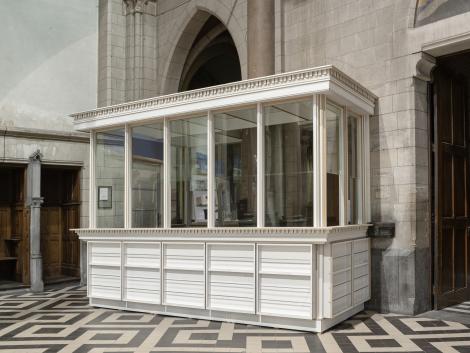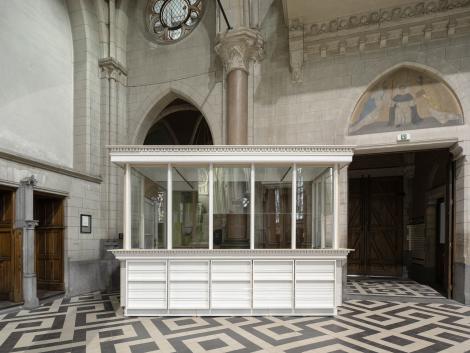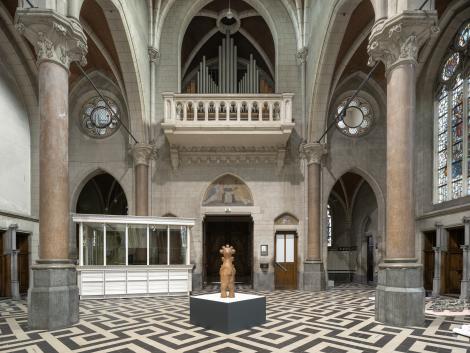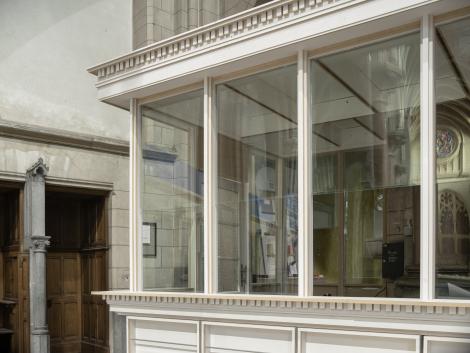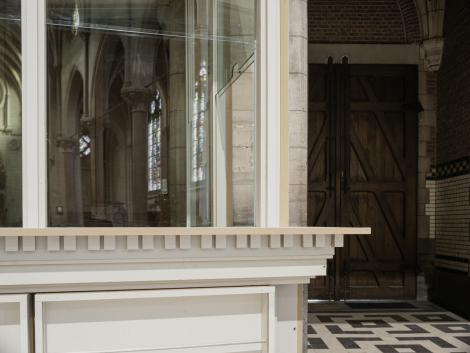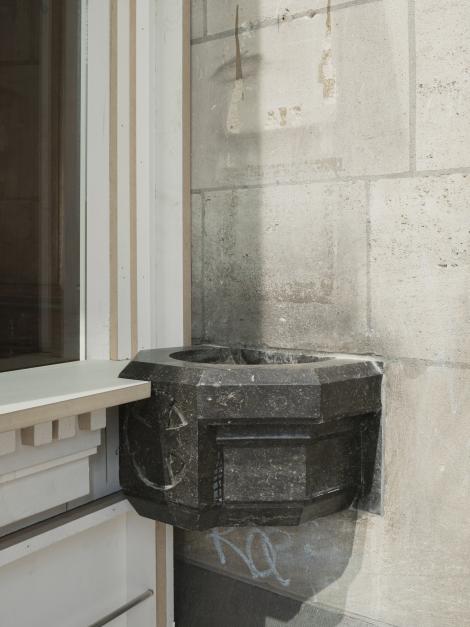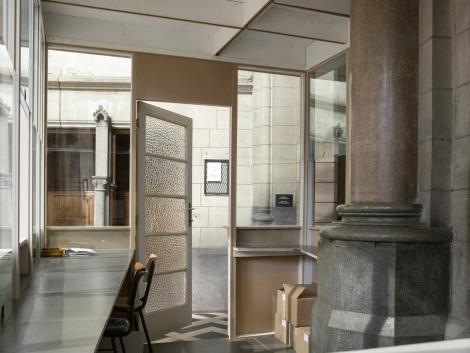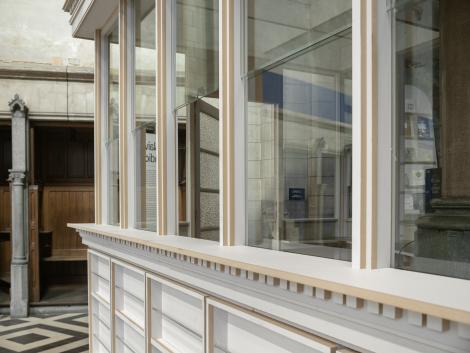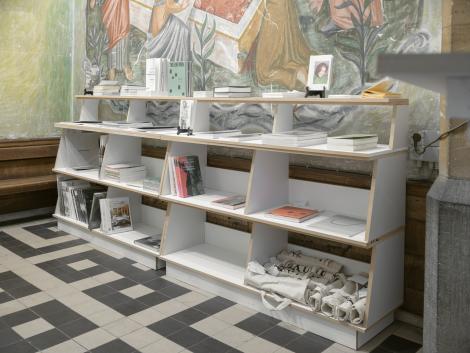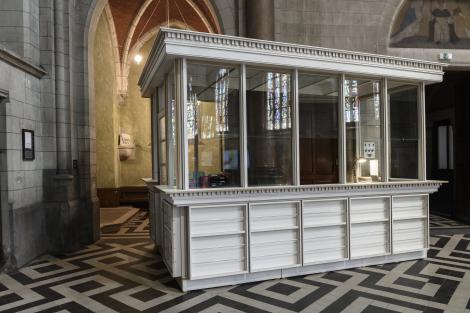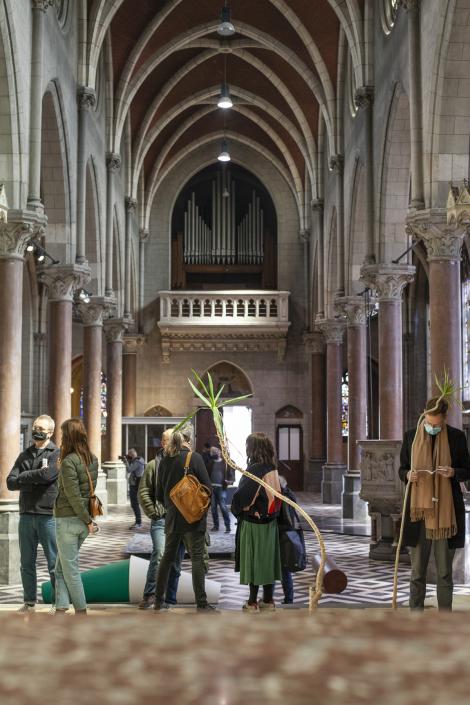Kunsthal Extra City
Kunsthal Extra City (KEC), an Antwerp-based organisation engaged in exhibiting contemporary art, recently moved into a new location and asked Rotor to prepare the place for its new use as an exhibition hall. The new venue is not banal: an early 20thC deconsecrated church, located closely to the Antwerp Central Station and its adjacent Zoo.
Together with KEC we decided to not be bothered by the religious architecture and to approach it with a certain indifference, leaving its appropriation and interpretation to the future artists. To prepare the main church space for its new programme, we focused on providing the necessary (technical) infrastructure: metal tubes between the columns to suspend lights and artworks, a curtain to create an intimate lecture space in the chancel, additional electrical wiring, a new toilet (furnished with Rotor DC materials), etc. All of them are modest and material-efficient interventions. But this discretion is compensated by a highly conspicuous new front desk at the main church entrance to welcome visitors, which became the main ‘design’ feature of the project (complemented by some furniture for a small bookshop in the niche behind).
If largely built in concrete, the church presents an interior typical for aging roman-catholic places of worship. Large, slightly deteriorating surfaces alternate with smaller, sophisticated articulations: the capitals, stained-glass windows, confessionals and the typical pulpit. We wanted the new reception to inscribe itself in this logic as a new piece of ornate furniture, an additional “sophisticated articulation” to the church interior, that marks its autonomy spatially from the rest of the church by pivoting away from the central axis.
An opportunity for the material medium of this new feature presented itself via another project we were working on at the same time, the redevelopment of the fine arts museum in Ostend (Mu.ZEE), where loads of superfluous, painted MDF boards were dismantled during the works.
This mundane material guided the design of the desk, which is based on the typology of the street kiosk, with an ornamentation borrowed from classicism. The booth is made entirely out of the unmodified, painted MDF from Oostende, except the plexi windows and the salvaged entrance door. The nature of the design, a puzzle of innumerable small rectangular surfaces allowed the carpenters of Kopspel, a social economy firm, to select the better chunks of salvaged MDF, while not caring too much about small damages. The form of the kiosk hence results from considerations on the properties of the material worked with, as well as its salvaged nature, aligned with the very charged context of the church interior. In the end it all hinges on the pervert pleasure of making something too complex from a material usually deemed too poor.
Design team Rotor
Tristan Boniver, Arne Vande Capelle, Lionel Devlieger, Victor Everaerts, Sophie Boone and Gaspard Geerts with the help of Stijn Colon and Olivia Noel
Team Kunsthal Extra City
Joachim Naudts, Annedore van Zalen, Joke Desmet
Contractor
Kopspel (general works)
Studio Kuurjeus (kiosk)
Location
Provinciestraat 112, 2018 Antwerpen
Thanks to
The team of Mu.ZEE for the careful dismantling of the MDF!

